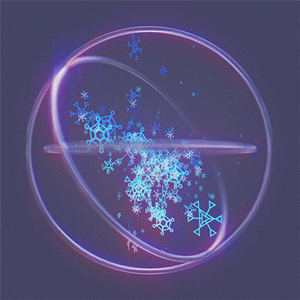 RU
RU  EN
EN CRYOMEDICINE CRYOMEDICINE  |




 : +7(916)525-61-42
: +7(916)525-61-42 : 5256142@mail.ru
: 5256142@mail.ru
|
CRYODESTRUCTION AND IMMUNOMODULATION IN THE TREATMENT OF BENIGN SUPERFICIAL NEOPLASMS ASSOCIATED WITH HUMAN PAPILLOMAVIRUS (HPV) Proceedings of the St.
Petersburg Cryotherapy Forum,
ITMO University, 2025 The relevance
of the topic of treatment of HPV-associated neoplasms. According to WHO, 50-80% of the population is infected with HPV, but
only 5-10%
of infected individuals have
clinical manifestations of the disease. The prevalence of HPV-associated neoplasms is steadily increasing.
Over the past decade,
the prevalence of papillomavirus infection of the anogenital region
in the world has increased
more than
10 times
and is found in 13%
of the population. The incidence of one of
the manifestations of HPV infection,
anogenital warts, is high,
with 120.5 new cases
per 100,000
population. Every year, 20
million people are diagnosed worldwide.
new cancer
cases (WHO
data 2022),
with 5%
associated with HPV
and the majority (75%)
localized in the anogenital
region. Frequent relapses
of papillomavirus infection (PVI)
necessitate comprehensive treatment. Previously,
a sufficient
number of studies have been conducted to determine
the effectiveness of various types
of surgical treatment in
combination with immunomodulatory
therapy, in particular
with Allokin-Alpha,
in the treatment of HPV-associated neoplasms, primarily
such as
genital warts of the anogenital region
and cervical
erosions. The previously obtained
data convincingly
showed that after
the use of such treatment,
PVI remission
is registered in 90-96% of patients
(according to various sources),
human papillomavirus DNA was not
detected in more than
80%. The
best treatment
results were obtained
when cryosurgical
treatment was combined with
immunomodulatory therapy. Cryosurgical treatment at the
Edelweiss Center for Medicine
and Dentistry
has been carried out for 9
years. Applied cryosurgical treatment methods
at the
Edelweiss Center for Medicine
and Dentistry.
Justification of cryosurgical
treatment in combination
with immunomodulatory
therapy in the treatment
of HPV-associated neoplasms. Cryosurgical treatment is effective and
has a number
of advantages over other
types of surgical interventions,
which is
important in the treatment
of HPV-associated neoplasms. The main advantage
of cryodestruction is the phenomenon
of organotypic regeneration, that is,
healing without scarring,
or healing
with a mosaic regenerate, including
areas of organotypic and
scarring, which is
one of
the main cosmetic advantages
of cryosurgery. During cryodestruction,
nothing is immediately
removed, the destroyed pathological
tissue remains in place for a long
time, acting
as a wound
dressing and providing
another important advantage
of cryosurgery. With prolonged
enough contact of cryonecrosis
with the whole organism,
immunomodulatory reactions of the body are triggered. There is no denaturation
of pathological proteins and
nucleic acids during
cryodestruction. However, these
pathologically altered structures,
which carry the main
characteristics of the etiological factors
of the pathological process, become
antigens in the composition
of non-viable, already alien
tissue destroyed by cold. In
response, specific antibodies
are produced,
phagocytosis is activated, directed
against similar cryodestructible
pathological elements throughout
the body. Different cells, tissues, and
organisms have different
intrinsic sensitivity to
cold: melanocytes,
basal cells,
and bacteria
die easily,
while fibroblasts,
collagen, nerve tissue,
and blood
vessels, as well
as viruses,
are less susceptible to cold
injury. In this regard,
especially in common
or complicated
forms of HPV-associated neoplasms, cryosurgical
treatment should be performed
simultaneously with the use
of immunomodulatory drugs. For cryodestruction of common or
complicated forms of HPV-associated
benign superficial neoplasms,
we use
drugs: Allokin-Alpha and Isoprinosine. Applied schemes and results
of cryosurgical treatment in
combination with immunomodulatory
therapy in the treatment
of HPV-associated neoplasms. Conclusions: References: Shafranov V.V., Borkhunova
E.N., Taganov
A.V., Torba
A.I., Tsyganov
D.I., Mazokhin
V.N., Pisiskova
A.V. "Theory
and mechanism
of damage to biological tissues
during local freezing"
Russian Bulletin of Pediatric
Surgery, Anesthesiology and Intensive Care, Moscow,
2011 (1)
Borkhunova E.N. Features
of reparative tissue regeneration
after cryodestruction,
microwave cryodestruction and microwave
destruction: Dissertation of Doctor of Biological
Sciences, Moscow 2004,
325 p. Kalmykova Z.V., Shafranov
V.V. "The
use of cryosurgery in
a multidisciplinary
clinic" - Plastic
Surgery and Cosmetology
journal, Moscow, 2013
(3) |
|
CRYOSURGERY AND MODERN HIGH-TECH
METHODS OF TREATMENT OF A NUMBER OF PATHOLOGICAL
NEOPLASMS
Kalmykova Z.V., Korsun V.V. The article is about the principles and fundamentals of cryotherapy, as well as the applied methods and experience of cryosurgical treatment of various neoplasms of the skin and mucous membranes on the basis of the cryogenic treatment room of the City Clinical Hospital ¹60. In recent decades, so–called "new"
types of energy have been introduced into
medicine, particularly surgery -
laser, ultrasound, magnetic
devices, electromagnetic fields and
low temperatures.
The number of malignant
diseases is gradually and
continuously increasing all
over the world. The growth of the
cancerous tumor itself and the development
of distant malignant metastases
means a fatal outcome
for a sick
person. Only a part
of patients succeed after
routine surgical operations.
Most patients
need a
new radical
and palliative
approach to the treatment
of malignant diseases, which
leads to
an improvement in the quality of life
and an increase in life
expectancy.
Cryosurgery is characterized
by the local application of ultra-low temperatures,
usually from -20
°C and
much lower.
As a result
of the effects of the latter, their
destruction occurs in
the frozen biological tissue
or organ,
avital and irreversible physico-biochemical processes occur, the so-called local
cryodestruction. In medical scientific and clinical practice, LIQUID NITROGEN is most widely used for the use of local cryodestruction of biological tissue, especially in surgical oncology. This approach in the widespread use of liquid nitrogen is motivated by the most acceptable physical and technical characteristics of this cryoagent, as well as storage, transportation conditions, economic accessibility, etc. When using liquid nitrogen, temperatures from -25 °C to -50 ° C are reached in tissues or organs within about 30 seconds. Benign neoplasms usually require temperatures from -20 °C to -30 °C, and effective removal of malignant neoplasms often requires temperatures from -40 °C to -50 °C. The theoretical basis of local freezing is the study of the "behavior" of water in biological systems when the temperature drops. Initially, the American biologist Peter Mazur proposed the theory of extracellular and intracellular crystallization of water (ice formation occurs in intracellular fluid and inside cells). Due to the crystallization of water, cellular structures are destroyed and tissues die. It should be said that this theory is certainly true, but only for cryopreservation processes. This theory is not applicable for cryogenic tissue destruction, and that's why. The number of cells in 1 cubic cm of tissue reaches an average of 10 to 14 cells. This is an extremely dense package. The energy saturation of tissues is phenomenal: 1 gram of human body mass generates 1000 times more heat than 1 gram of the mass of the sun. For this reason, it is impossible to "freeze" a lot of tissues, and any local freezing process is limited in its capabilities. Studies have shown that the process of local cryodestruction with the help of simple devices lasts 3 minutes, and with the help of automatic systems it takes only 15 minutes. The area of thermodynamic equilibrium stops the growth zone of the ice ball. You can "freeze" the fabric for 1-2-10 hours or more, the thermodynamic equilibrium zone will not move anywhere and does not allow you to do more. Thus, there are
2 stages
in the mechanism of damaging effects:
It is important to know that:
Nevertheless, in order to prolong the thermal
(metabolic) barrier and
structural resistance, i.e.
to increase
the volume of cryodestruction, in some
cases a
combination of the cryogenic method
with preliminary
exposure to a microwave electromagnetic
field is required. The microwave
field, interacting with
additional structures, "tears
out" up to 60-70%
of the water, making it
more "free".
Subsequent freezing turns
this water
into tissue-destroying ice
structures.
It should be noted
the immunomodulatory effect that occurs
after cryodestruction
of pathological tumor or
inflamed tissue, when
the mechanism of stimulation of nonspecific immunity
is triggered (humoral –
production of bactericidal substances, primarily
fibronectin, lysozyme, interfernes,
complement system, etc.; cellular
– phagocytosis
and cytotactic
effect) and specific
(humoral – production
of antibodies by B-lymphocytes
and plasma
cells by cells; cellular
– with
the participation of T-lymphocytes, or rather their
populations of helpers, suppressors,
killers, memory cells),
antitumor, antiviral, antimicrobial,
and antifungal immunity. There is no denaturation
of pathological proteins and
nucleic acids during
cryodestruction. However, these
pathologically altered structures
(which carry the
main characteristics
of the etiological factors of the pathological process) are part of non-viable, already
alien tissue
destroyed by cold they become
antigens. In response,
specific antibodies are
produced, phagocytosis is activated, directed
against similar pathological
elements subjected to cryodestruction, not only
at the site of cryodestruction,
but throughout
the body.
The methods of cryogenic exposure used in our practice It should be noted
that for
many years
(since the opening
of the cryosurgery and cryotherapy
room at the City Clinical
Hospital No. 60
in 1993),
we have applied all
cryogenic exposure techniques
using all
domestic cryomedical devices.
Cryodestruction by the application
method is performed either
by contact
with a cryoapplicator and/or a portable
filler cryoapplicator with a set
of nozzles, or by
using cryoapplicators.
In any
case, before
exposure, it is necessary to select the size
of the cryonic intestine corresponding to the size of the neoplasm.
The criterion for
the cessation of exposure is
the formation of a zone of thermodynamic
equilibrium. Visually, the
formation of a white stripe
(frozen tissue) around
the cryonic tip is noted.
The moment when the increase
in the width of the white stripe
stops corresponds to the moment when the thermodynamic equilibrium zone
is formed. The zone of thermodynamic
equilibrium always extends
beyond the boundaries of the tumor min.
by 0.2
– 0.5
cm, which
guarantees the devitalization of the tumor.
Cryospray destruction has
proven to be a highly
effective cryodestruction technique that
can destroy
any predicted
amount of tissue. It is produced using
portable or stationary
spray-type devices. In addition to destruction,
cryospray can be used
to irrigate
the skin for cosmetic
purposes using a cryoprotector,
with the doctor holding
the device at a distance
of 30-50 cm from
the patient. The diffused jet
is directed to the skin
of the face, neck and
decollete area. The procedure
is performed within 2-3
minutes. The effect is
to activate
microcirculation in the skin.
After thawing at the
cryodestruction site, edema develops
with the formation of a bladder with
serous or serous-hemorrhagic
contents, which can
be opened for 3-5
days. After
that, healing
takes place under the scab.
Depending on the size of the neoplasm,
one-, two-
and three-fold freeze-thaw
cycles can be used,
and the number of cryodestruction
sessions can range
from 1
to several.
Post-destructive surface care
consists of treatment
with 70% alcohol and
5% potassium
permanganate solution.
Microwave cryodestruction
is implemented in 2 stages. At
the 1st stage, irradiation
with a microwave field (CMB
range) is carried out for
several minutes. Stage
2 -
cryodestruction – is performed
in the usual way. As a
result, it is possible to obtain
a cryodestruction zone 4-6
times larger
than the
"pure" cryodestruction zone. Multifactorial quantum exposure after cryodestruction - usually several exposure sessions are performed. The use of multifactor sources of electromagnetic radiation makes it possible to enhance the processes of reparative regeneration of tissues and organs, as well as reduce inflammatory, edematous, painful and other possible manifestations of cryotherapy.
The results of our clinical achievements
It should be noted
that our
achievements presented in
Russia, France, and Japan
always arouse great
interest. We are
at the forefront of dealing with the problems of the theory of local
cryogenic effects, which
has gained recognition at
the global level.
I. Malignant tumors
II. Benign tumors
III. Suppurative processes
IV. Otorhinolaryngic
diseases
V. Other diseases
The results of treatment of patients with the presented nosologies were as follows: Group 1 – patients with malignant skin tumors. In most cases, basal cell and squamous cell carcinoma with a predominant localization on the face and locally destructive growth leading to disfiguring destruction of the nose, jaw, orbit and auricles were registered in this group. Patients in this group underwent cryodestruction (cryodestruction with a filler-type device, cryoapplicator or cryospray) and microwave cryodestruction. After the treatment, a positive result was noted, which consisted in eliminating the tumor and replacing it with thin scar tissue. The formation of coarse scars or long-term non-healing wound surfaces was not observed in any case. Group 2 – patients
with benign
skin tumors. Patients in this
group underwent
2-3 sessions
of cryotherapy (cryodestruction with a filler-type
device, cryoapplicator or cryospray)
and microwave
cryodestruction. In all
cases, positive surgical
and cosmetic
results were noted, which
was manifested by the formation of an atrophic scar
or regenerate
at the site of cryotherapy,
which looks similar to
the surrounding skin. Group 3 – patients with purulent diseases of soft tissues and trophic ulcers. Cryodestruction - cryospray destruction and microwave cryodestruction were used in this group of patients with carbuncles, boils, abscesses, and hydradenitis. In all patients, after the treatment, necrosis of the capsule of the purulent focus was observed, its separation along with its contents from the surrounding tissues, peeling, filling the defect with granulation tissue and the formation of an atrophic scar at the site of the defect. Cryodestruction and cryospray irrigation were used in patients with long-term non-healing trophic ulcers as a stage of preparation of the wound surface for skin grafting. After the treatment, the elimination of excessive pathological granulations and epithelialization of the ulcerative surface were noted, and graft engraftment was noted in patients who later underwent flap transplantation. Group 4 – patients with otorhinolaryngic diseases. Patients in this group underwent cryosurgical treatment, after which complete regeneration of the mucous membrane of the organs was observed. The effectiveness of cryotherapy has also been noted in the treatment of patients with Randu-Osler disease. So, during repeated examinations after 3-5 years, the elimination of telangiectasia was noted, which led to the absence of nosebleeds characteristic of this pathology. Group 5 – patients with other diseases – in this group, positive treatment results were obtained using these methods. The use of cryospray for skin biorevitalization seems to us to be an effective method that deserves attention for dermatocosmetological practice. When using it, moderate skin hyperemia is observed due to the activation of microcirculation processes, which leads to an improvement in appearance, as well as to the optimization of metabolic processes in the skin.
The use of multifactorial quantum effects after cryodestruction makes it possible to somewhat reduce the healing time of cryogenic wounds by improving trophic and tissue regeneration in the field of cryodestruction. Based on many years of experience and analysis of the treatment results of a large group of patients, the following conclusions can be drawn:
1. The cryosurgical method is
one of
the competitive methods in
the treatment of oncological diseases,
since low-temperature
exposure is highly effective, ablastic,
painless, bloodless, well
tolerated by patients, has
an immunomodulatory effect with
good long-term results.
2. Cryodestruction using our
methods (using cryoapplicators,
filler-type devices,
cryospray and tubes
that localize the refrigerant jet),
as well
as microwave cryodestruction, makes it possible to achieve
the destruction of a neoplasm with
the capture of the perifocal zone
and devitalization
of the entire volume of tumor
tissue. Healing is completed
by the formation of an atrophic scar
or regenerate,
superficially similar to
the surrounding skin. The high
efficiency of the technique is confirmed by the absence of relapses
in patients of the studied group.
3. Cryosurgical methods are effective
in a wide
range of diseases: inflammatory
processes, tumors, precancerous
conditions, viral dermatoses,
scars, and long-term non-healing wounds.
It is important to emphasize the effectiveness of these techniques
in the treatment of trophic ulcers
in patients with diabetes mellitus
in the decompensation stage. 4. Cryosurgery does
not require
anesthesia and does not
cause pronounced
general reactions from
the cardiovascular
system. This expands
the possibility of providing surgical
care to patients who
are contraindicated in the traditional surgical
method of treatment. 5. In some
cases, it is necessary
to perform local anesthesia
in patients who react emotionally
to cryosurgery
or in people
with a reduced pain
threshold. Prior exposure
to lidocaine aerosol on
the surface of the skin or
mucous membrane makes
the operation painless. 6. The cryogenic treatment
method in the presented
variants does not cause
general intoxication and is accompanied
by minimal operational risk.
Postoperative complications are extremely
rare and
are usually associated with
careless or improper
care of
the post-destructive surface. 7. The simplicity of
the cryosurgical treatment method allows
it to be widely used in
daily practice
in both
the office and the operating
room. References: Kalmykova Z.V. "Clinical geriatrics in
a multidisciplinary hospital" Proceedings of the scientific and practical conference
GKBNo. 60, Moscow, 2010.
Kalmykova Z.V., Shafranov V.V.
"Application of cryosurgery in
a multidisciplinary
clinic" Journal of
Plastic Surgery and
Cosmetology, Moscow, 2013
(3) Shafranov V.V., Reznitsky V.G.,
Shestiperov V.A. "Combined
effect of microwave electromagnetic
field and
local freezing
on biological tissue" Bulletin of Experimental
Biology and Medicine,
1982 No.
4, pp.
95-98. Borkhinova E.N. "Features of reparative tissue
regeneration after cryodestruction,
microwave cryodestruction and microwave
destruction" Dissertation of Doctor of Biological
Sciences, Moscow 2004,
325 p.
Gatkin E.Ya. "Application of laser photostimulation
in pediatric
surgery" Dissertation of Doctor of Medical
Sciences, Moscow, 2009,
298 p.
Gatkin E.Ya., Shafranov
V.V., Petlakh
V.I., Sukhorukov
V.S. "Method
of treatment of cryogenic wounds"
Patent for invention
No. 2366472,
FSU FIPS
09.10.2009.
|